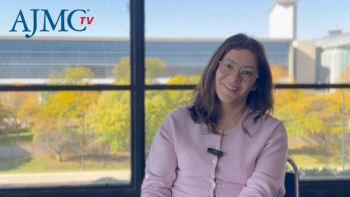
Combating Major Sources of Misinformation in Pediatric Dermatology: Timothy Caulfield
Timothy Caulfield, JD, research director of the Health Law Institute at the University of Alberta, takes a look at the major sources spreading dermatology misinformation to children, including social media.
Timothy Caulfield, JD, professor in the Faculty of Law in the School of Public Health and research director of the Health Law Institute at the University of Alberta, chronicles the major sources of information impacting children in regard to dermatology and skin care, including social media platforms like TikTok.
Caulfield presented at the Society of Pediatric Dermatology conference on misinformation and how providers and interdisciplinary teams can work together to combat the spread of dermatology myths around sunscreen, skin care products, visible signs of aging, and more.
This transcript has been lightly edited for clarity.
Transcript
What are some common misconceptions and misinformation that parents and caregivers have about pediatric dermatological conditions?
I think the big one right now is the anti-sunscreen movement. It is absolutely everywhere: this belief that sunscreen causes things like cancer, that it's a hormone disruptor. And I think that can do real, real harm. We're also seeing a lot of misinformation around things like supplements, that even young kids should be taking supplements for a whole host of reasons, including their skin.
Another really big one is the "Sephora kids" as it's been called, right, this idea that, that really young kids should be using anti-aging creams. And unfortunately, this misinformation works. It creates fear, it creates demand. And we've got to do what we can to push back.
What are the primary sources of misinformation in the pediatric dermatology space?
Look, misinformation comes from absolutely everywhere, right? It's in the mainstream media, it comes from families and friends. But there's absolutely no doubt, especially in the pediatric space that this is a story about social media, right? It's social media, social media, and social media. And research tells us that young adults, adolescents, and even younger kids get most of their information about the world from social media, especially platforms like TikTok, so that's really important.
We have to be aware of that reality that this is where kids are getting their information, and we also need to be on those spaces countering misinformation so there's good content for them to see so we can have a constructive impact in on those spaces.
How does misinformation affect the management of pediatric dermatological conditions and what are the potential risks of parents following incorrect information about their child’s skin condition?
Well, what's really interesting, I think, is that misinformation now is becoming more closely tied to things like personal identity. How you see yourself within a community, how you see yourself politically.
So misinformation now, especially when you're talking about parents, it can become more difficult to counter their perceptions. Think about the anti-vaccine movement, right? This has really become a powerful political movement. So if you have parents that have bought into that community, it can become much more difficult to make science-informed clinical decisions with them. And these should be obviously decisions that are made together. So that misinformation can obviously have an impact in that, in that regard.
Misinformation can also have an impact on health behaviors that you're not hearing about. You may not know of all the supplements they're taking the strange behaviors they're doing because some influencer told them to do it. So I think it also should remind clinicians to ask about those things. Are you only on a carnivore diet or something like that? Learn about what your patient is doing because of the misinformation that's out there. So I think it's important for clinicians to have a sense of those health misinformation trends that are happening not just on social media, but really everywhere.
Newsletter
Stay ahead of policy, cost, and value—subscribe to AJMC for expert insights at the intersection of clinical care and health economics.

















































